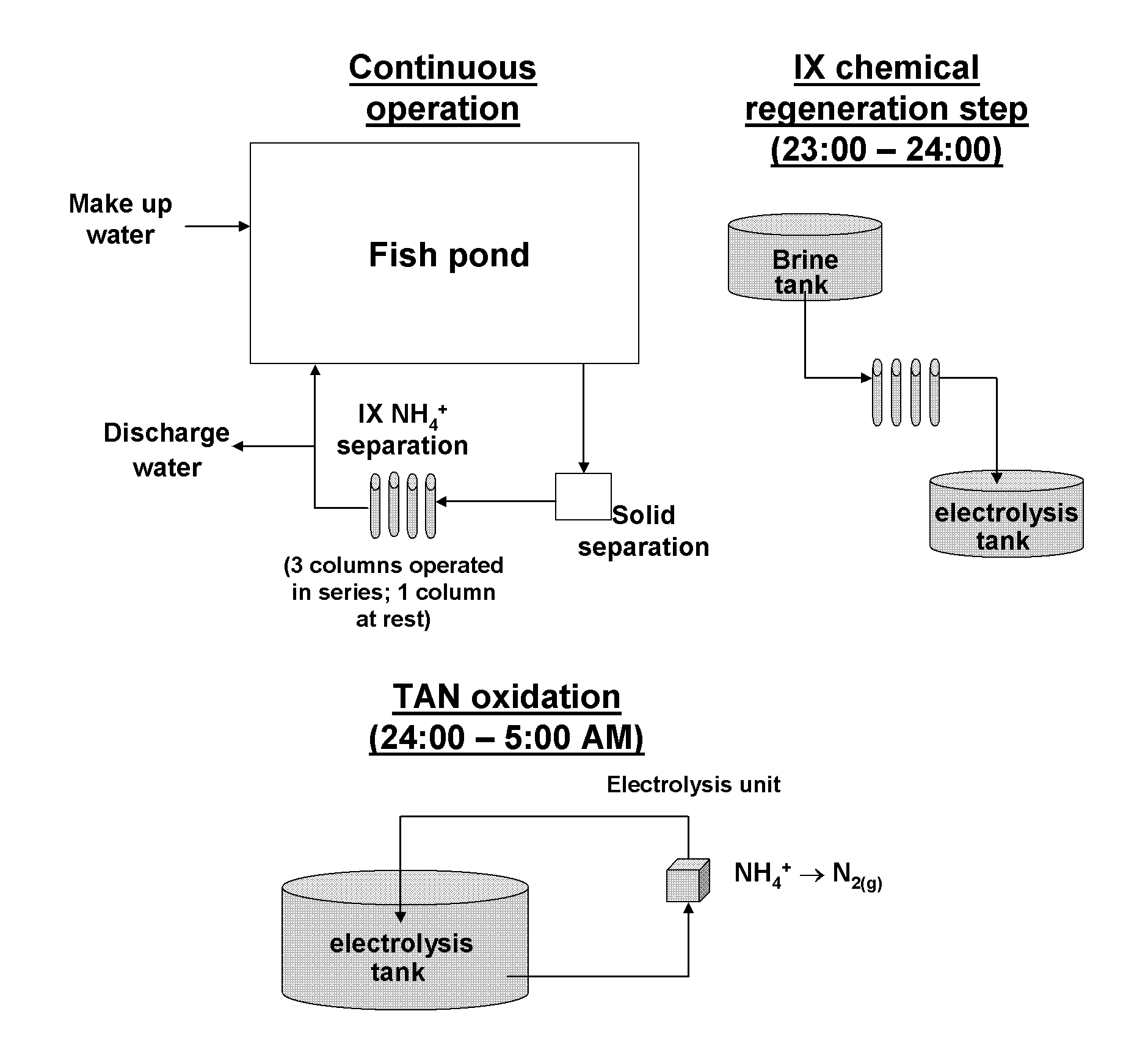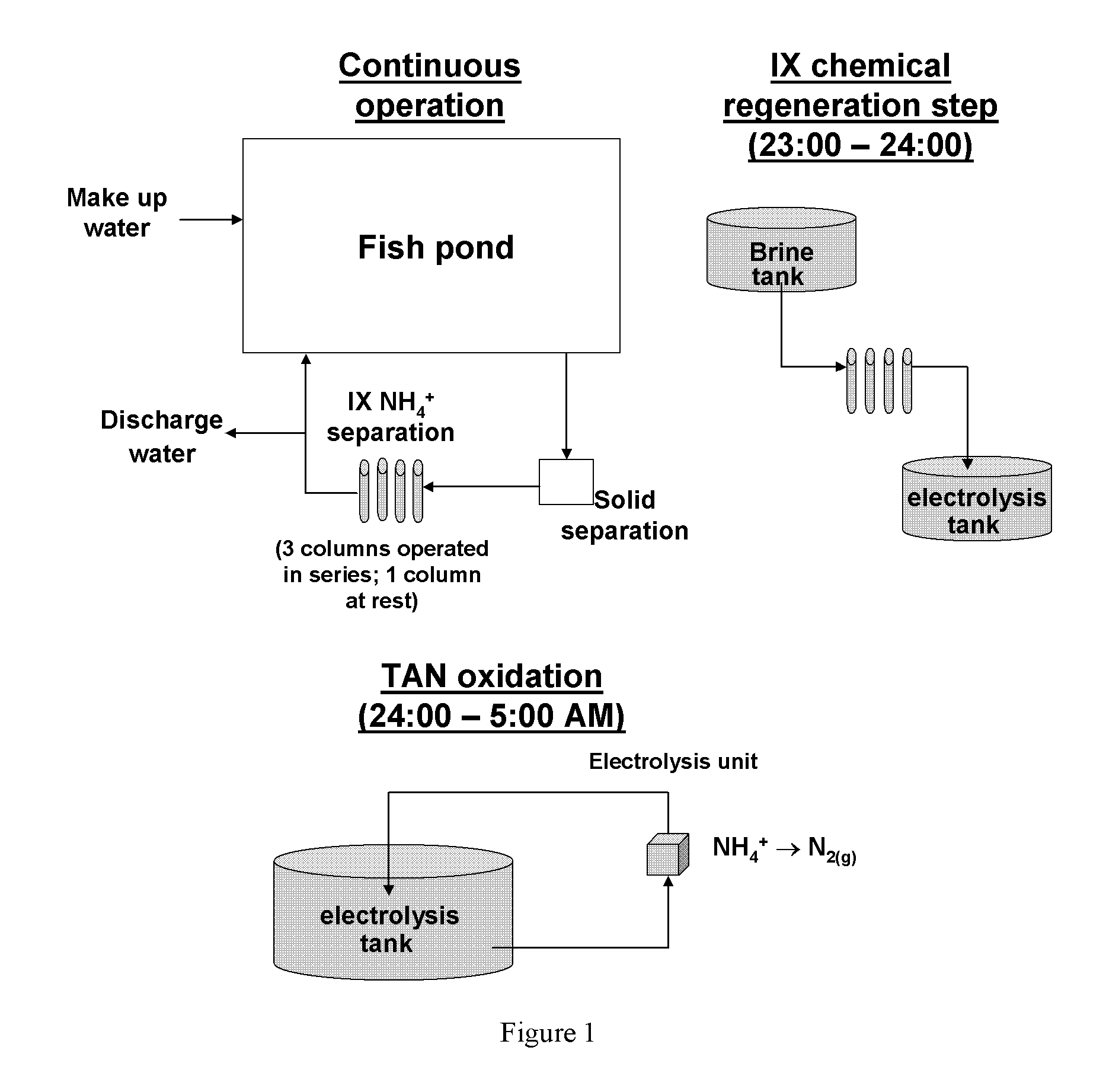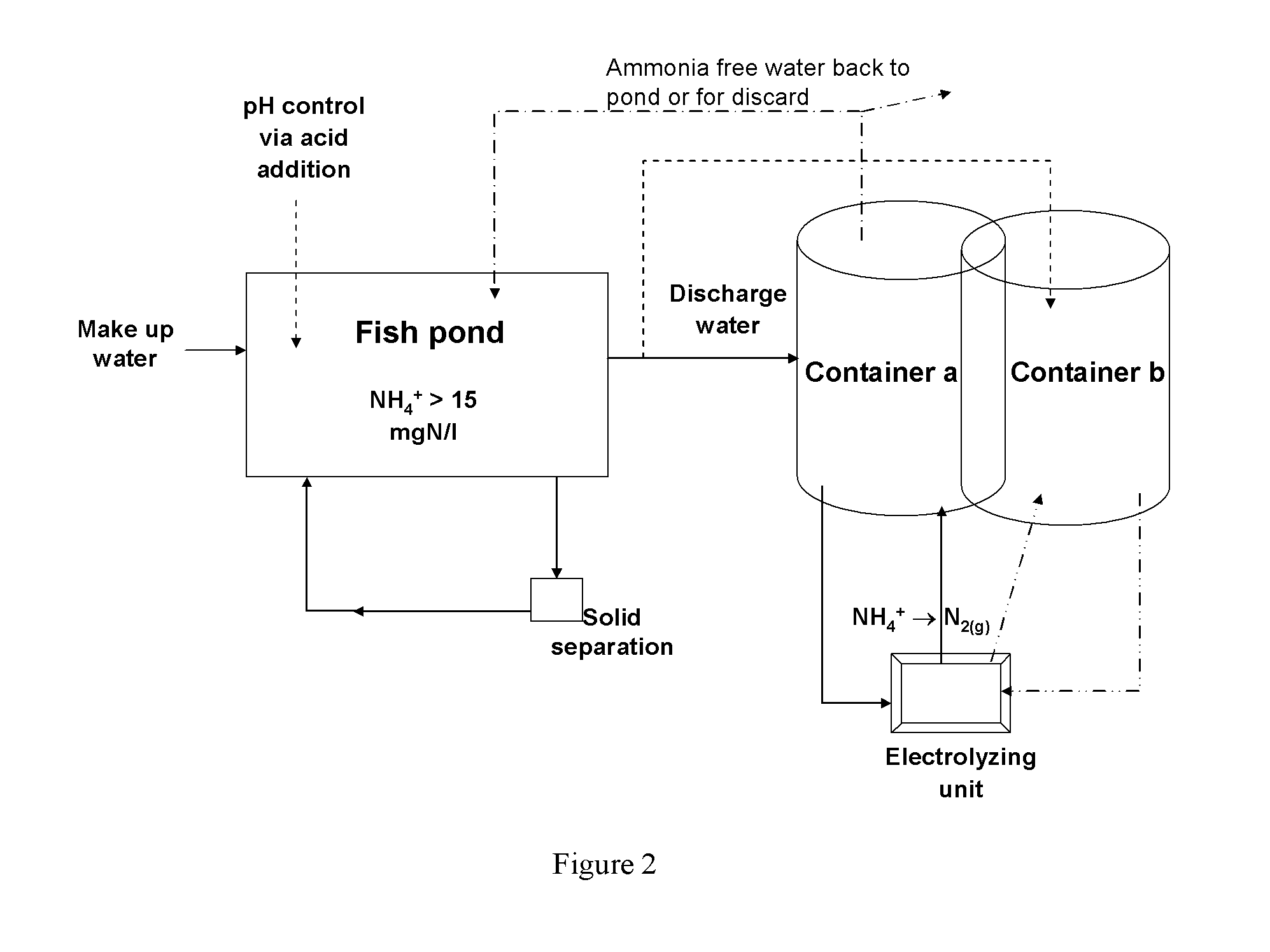Physico-chemical process for removal of nitrogen species from recirculated aquaculture systems
a technology of recirculated aquaculture and process, applied in the direction of cation exchangers, water treatment parameter control, specific water treatment objectives, etc., can solve the problems of high water consumption, high cost, and high reliability of cage cultur
- Summary
- Abstract
- Description
- Claims
- Application Information
AI Technical Summary
Benefits of technology
Problems solved by technology
Method used
Image
Examples
example 1
Batch Ammonia Electrooxidation
[0072]Several experiments were performed with various NH4+ concentrations and pH values. The results of two representative experiments are presented in FIGS. 4 and 5.
[0073]In all the experiments that were conducted at low pH (results shown in FIG. 4) or in water with low buffering capacity in the regenerant solution, the TAN concentration dropped in a linear fashion with time and hardly any chloramine species were formed. The results depicted in FIG. 4 were obtained with the following conditions: pH 4.5 (maintained constant by controlled addition of NaOH 1.5 M), I=4.5 amp, electrolyte volume 10 liter, [NH4+]0=209.2 mgN / L, applied voltage 4.412 V, electrodes surface area 9.1*5.1 cm2 (Ti / RuO2 anode, Ti cathode). The Cl− concentration was 80 g / L. Under such high CF concentration the current efficiency, defined as the fraction of electrons utilized for the desired reaction (i.e. ammonia oxidation by Cl2), approached 100% (observed efficacy=97%).
[0074]FIG. 5...
example 2
NH4+ Removal From Fish Pond Water (Fresh Water RAS) by Ion Exchange
[0076]In order to establish the relevant breakthrough curves, water from an active RAS (Sdey Trumot, Israel) were used and compared with a breakthrough curve obtained with tap water. The experiments were performed as follows: NH4Cl was added to the water to attain TAN concentrations of either 15 or 30 mgN / L. In all experiments the pH was adjusted so as to provide NH3(aq) concentration of 0.1 mgN / L.
[0077]FIG. 6 shows ion exchange breakthrough curves (Fish pond water: [Ca2+]=112; [Mg2+]=51.7; [Na+]=194.4; Tap water [Ca2]=82.6; [Mg2+]=36.2; [Na+]=101.8; [K+]=4.9 (all concentrations in mg / L). The breakthrough curve obtained with fish pond water (15 mg / L, pH 7.2, 100 bed volumes (BV) to attain 2 mgN / L of ammonia) was used in the following case study calculations.
example 3
RAS Simulation
[0078]In order to verify the feasibility of the ammonia treatment according to the principles of the present invention, a mathematical model simulating a fish growing RAS was developed using the Matlab™ software. Model input parameters are listed in Table 1.
TABLE 1Parameters that were used for water quality simulation in fresh and seawater RAS operationParameterValueAquaculture volume 100 m3Fish density 50 kg / m3Feeding rate 100 kg / d (40% protein)Fish typeTilapia for fresh waterSeabream for seawaterNH3 excreted by fish per kg feed 45 g for Tilapia 40 g for SeabreamCO2 excreted by fish per kg feed 1375 g for Tilapia 748 g for SeabreamMake up water flow rate to feed 0.1 to 0.4 m3 / kg feed for fresh waterratio 0.5 to 2.5 m3 / kg feed for seawaterpH of make up water 7.8 for fresh water 8.1 for seawaterCa2+ concentration in the 82 mg Ca / L (for fresh water only)incoming waterTotal inorganic carbon 3 mM for fresh waterconcentration (Ct) 2 mM for seawater1...
PUM
 Login to View More
Login to View More Abstract
Description
Claims
Application Information
 Login to View More
Login to View More - R&D
- Intellectual Property
- Life Sciences
- Materials
- Tech Scout
- Unparalleled Data Quality
- Higher Quality Content
- 60% Fewer Hallucinations
Browse by: Latest US Patents, China's latest patents, Technical Efficacy Thesaurus, Application Domain, Technology Topic, Popular Technical Reports.
© 2025 PatSnap. All rights reserved.Legal|Privacy policy|Modern Slavery Act Transparency Statement|Sitemap|About US| Contact US: help@patsnap.com



